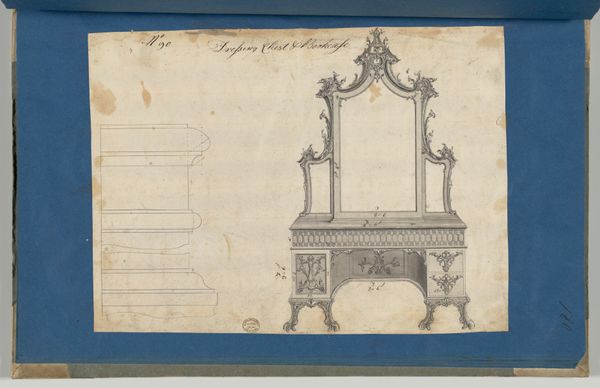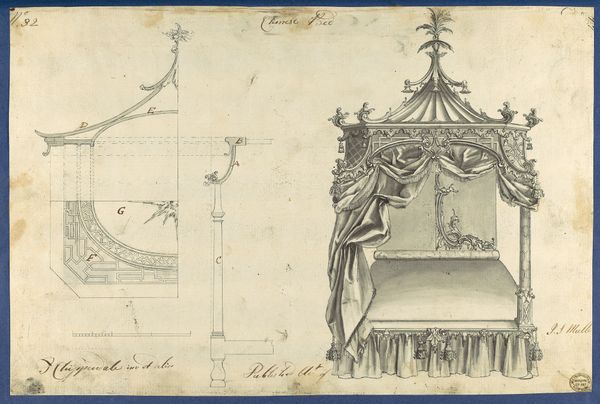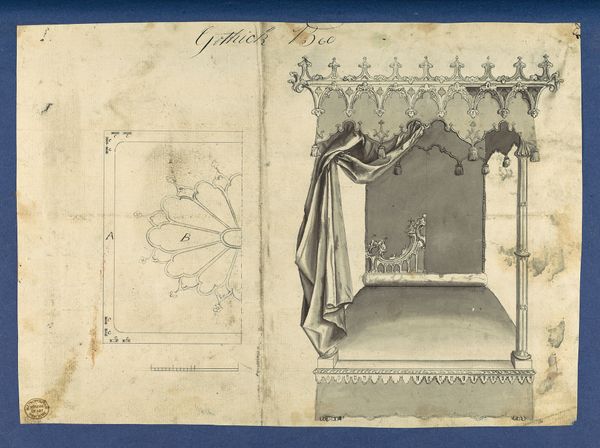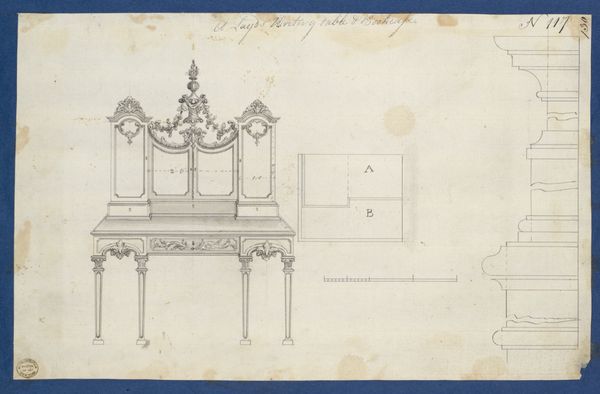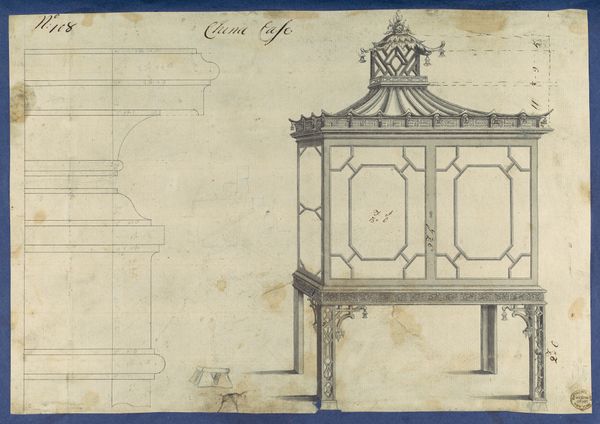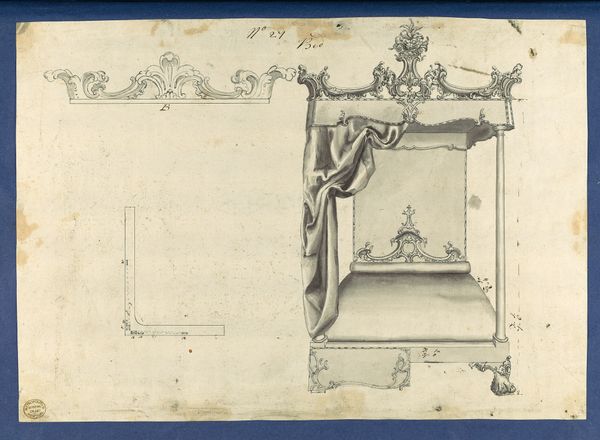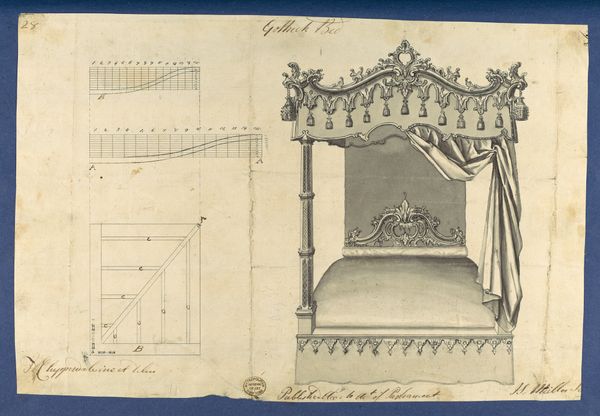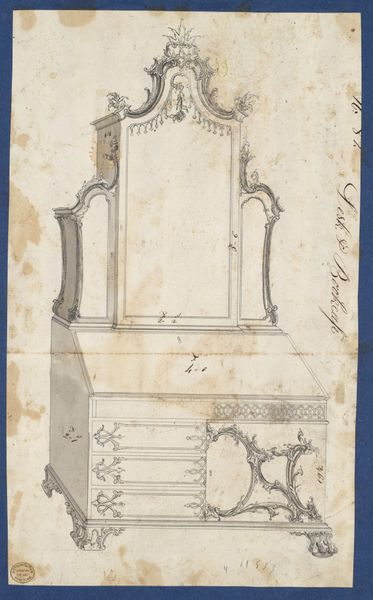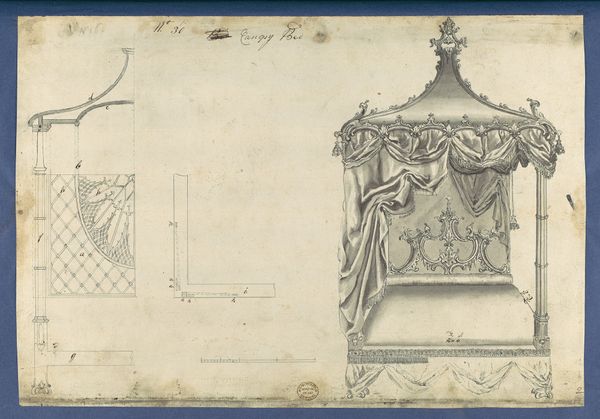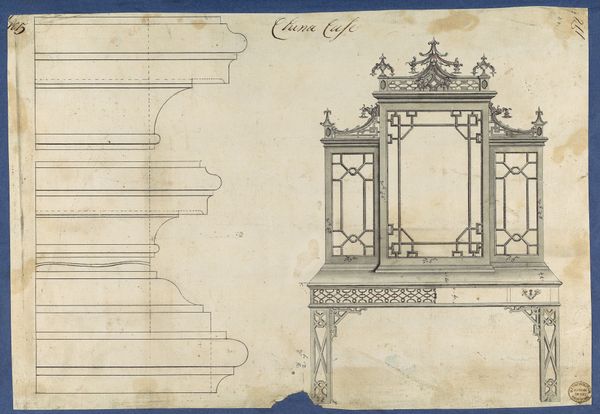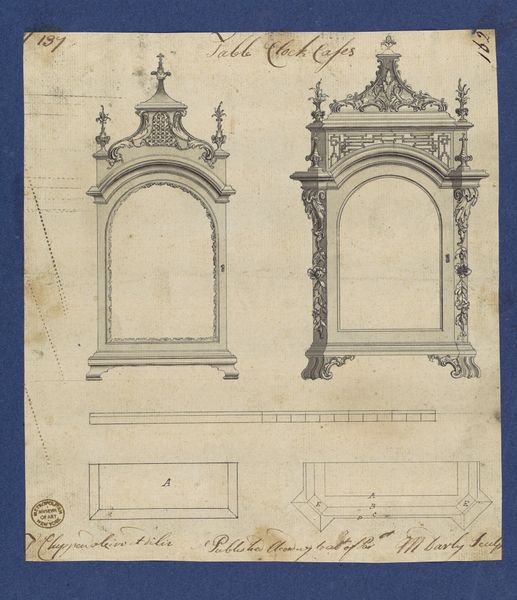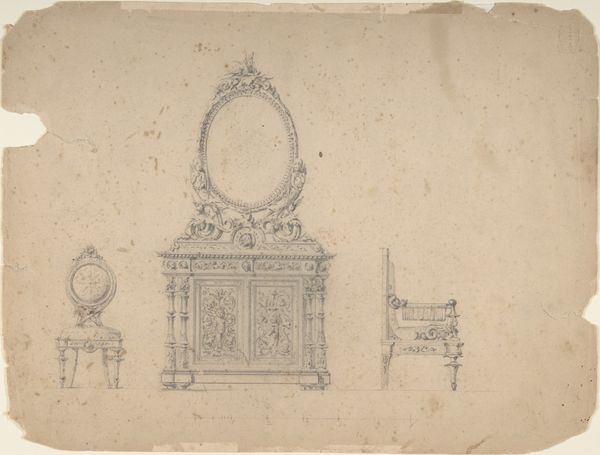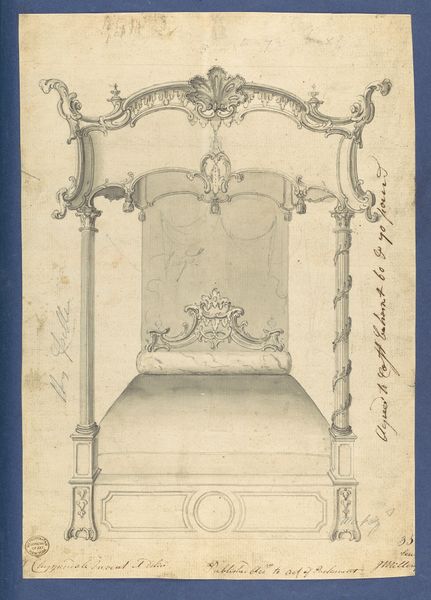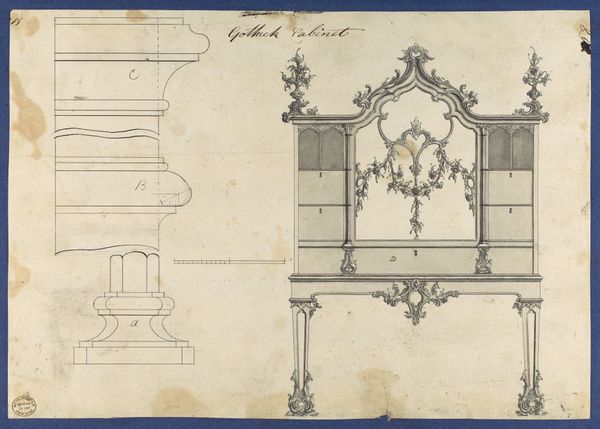![Doom [Dome] Bed, in Chippendale Drawings, Vol. I by Thomas Chippendale](/_next/image?url=https%3A%2F%2Fd2w8kbdekdi1gv.cloudfront.net%2FeyJidWNrZXQiOiAiYXJ0ZXJhLWltYWdlcy1idWNrZXQiLCAia2V5IjogImFydHdvcmtzLzc0NmM1Yzc4LTgyNWEtNGQ3Ni1hNWMyLWY1YzhhNTk3NzU3Yi83NDZjNWM3OC04MjVhLTRkNzYtYTVjMi1mNWM4YTU5Nzc1N2JfZnVsbC5qcGciLCAiZWRpdHMiOiB7InJlc2l6ZSI6IHsid2lkdGgiOiAxOTIwLCAiaGVpZ2h0IjogMTkyMCwgImZpdCI6ICJpbnNpZGUifX19&w=3840&q=75)
Doom [Dome] Bed, in Chippendale Drawings, Vol. I 1753
0:00
0:00
drawing, print, pencil, engraving
#
drawing
# print
#
coloured pencil
#
pencil
#
engraving
Dimensions: sheet: 8 15/16 x 13 1/4 in. (22.7 x 33.7 cm)
Copyright: Public Domain
Editor: This is "Doom [Dome] Bed" by Thomas Chippendale, a drawing and print from 1753. It depicts an elaborate four-poster bed design. I'm struck by the sheer opulence of it, but also how rigid and architectural it feels for something intended for rest. How do you interpret this work in its historical context? Curator: The drawing speaks volumes about 18th-century British society, where displays of wealth and status were paramount. Consider the bed itself—far beyond mere functionality, it’s a stage. Chippendale, though, wasn't designing for just anyone. Who do you think the intended client was, and what social structures were being reinforced by this type of extravagance? Editor: I imagine this was intended for the aristocracy. And by showcasing this level of detailed craftsmanship, it’s perpetuating a social hierarchy. There's also something deeply uncomfortable about the implied labor and resources required for such a piece while so many lived in poverty. Curator: Precisely. Chippendale’s designs represent the complex entanglement of aesthetics, labor, and power. How might the materials—the unseen wood, textiles—relate to the colonial enterprises of the time? Luxury was directly tied to exploitation. Editor: So, even something as seemingly innocuous as a bed design becomes a symbol of larger systems of inequality? Curator: Absolutely. It's crucial to examine how seemingly beautiful objects are often rooted in less-than-beautiful histories. Considering its inherent symbolism, and what function might the bed fulfill for a family looking to communicate and secure power. Editor: It's definitely shifted my perspective. I now see it less as a simple furniture design and more as a materialization of social and political forces at play during the 18th century. Curator: I agree; art and design act as crucial portals through which we can unpack societal ideologies and lived experience through class, race and gender. It offers a space for critique.
Comments
No comments
Be the first to comment and join the conversation on the ultimate creative platform.
